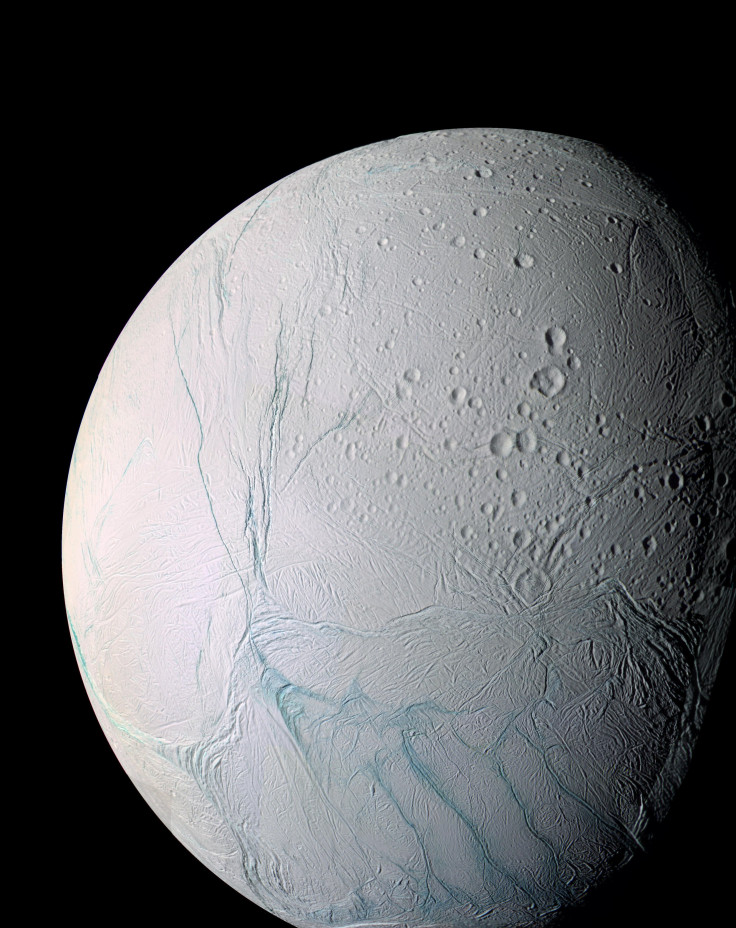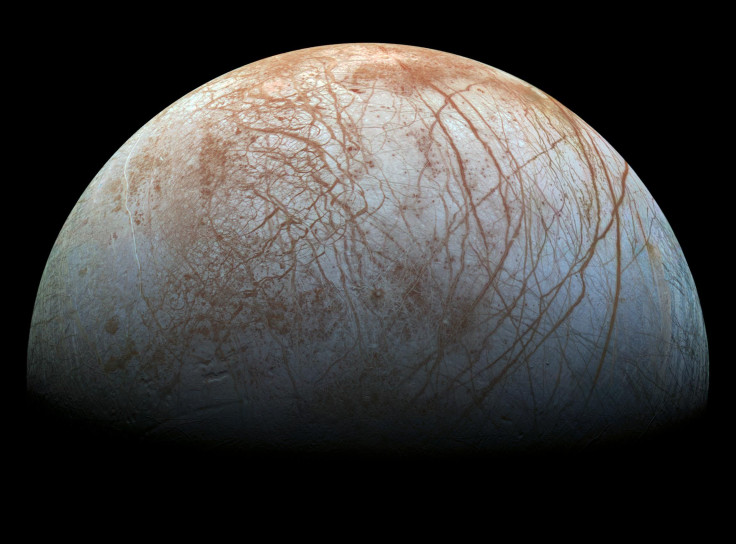Living On The Moons: Enceladus, Europa Will Go From Ice To Fire

Humans might never be able to live on the icy moons in our outer solar system, despite all the clues that Enceladus and Europa have conditions that could support alien life. And greenhouse gases could be to blame.
A new study in the journal Nature Geoscience suggests that when the sun brightens further along in its life and heats them up, these worlds will go straight from ice-covered globes to hot, waterless orbs. The idea applies both to the two moons, which orbit Saturn and Jupiter, and to some exoplanets — planets in other solar systems — with outer shells of ice.
Read: Have Scientists Found the First Exomoon Ever?
“It has been suggested that icy planets and moons become habitable after their initial ice shield melts as their host stars brighten,” the study says. “Here we show from global climate model simulations that a habitable state is not achieved in the climatic evolution of those icy planets and moons that possess an inactive carbonate-silicate cycle and low concentrations of greenhouse gases.”
The carbonate-silicate cycle the authors are referring to is the evolution of rock through processes like sedimentation and weathering, a substantial part of the way carbon cycles through the global ecosystem. In the case of the Earth, the carbon cycle involves the element moving through water, soil, atmosphere and living things.
Greenhouse gases are the villain of climate change stories on Earth but they serve a purpose when they aren’t found in excess. These researchers say Europa and Enceladus don’t have enough to help transform them into habitable worlds. Without a carbon cycle and greenhouse gases to retain heat on the two moons, they would need so much energy from the sun to thaw that the radiation would send them directly from frozen to scorching without experiencing a period of habitability.
“The stellar fluxes that are required to overcome a planet’s initial snowball state are so large that they lead to significant water loss and preclude a habitable planet,” the study says.
The water in a vapor form would reach a high altitude and escape or, in a liquid state on the surface, boil off from the sea.
This situation won’t arise for another few billion years, when the sun reaches a later stage of its life and begins to expand, allowing its radiation to reach farther into space and offering more heat to locations in the outer solar system that were previously dark and cold.
According to global climate simulations, worlds around expanding F and G stars would experience this transition from icy to hot without any habitable period in between. Those stars belong to classes that are average temperature and brightness, and the sun is a G star. That means the icy Enceladus and Europa apply to this model, as do icy exoplanets orbiting around other F and G stars at a distance.
The findings leave it open, however, for the cooler K and M stars to potentially heat icy worlds at the proper proportion.
Read: Signs of Life on Other Planets
“If you had Europa and Enceladus analogues around those stars, they’d probably be safe,” study co-author Ramses Ramirez, from Cornell University, told Gizmodo.
There are, of course, other factors that go into what makes a planet habitable. Earth has gone through cycles of icy and hot through its history and Mars, while it was once temperate and covered in water, is now barren.
Enceladus and Europa might not need an expanding sun to become habitable anyway. Human life may never thrive on its surface, but astronomers have found clues that they could potentially support some forms of life. Scientists believe that beneath their icy exteriors are vast oceans and heat sources, and plumes coming off Saturn’s Enceladus contain hydrogen, water, carbon dioxide and methane, among other molecules.

© Copyright IBTimes 2024. All rights reserved.





















